Before the annual meeting
Medical Neuroscience at SfN2024 (annual meeting Society for Neuroscience 2024). Because of my work on this website for the course medical neuroscience I was invited again by prof. White to attend the annual meeting of the Society for Neuroscience in 2024 (SfN2024). My husband and I added a vacation trip in the USA to our journey.
We had a wonderful trip to Yellowstone and Grand Teton National Parks which we thoroughly enjoyed, we were especially captivated by the geothermical activity in that area like the Norris Geyser Basin where geysers, hot springs, mud pots, and fumaroles can be found. There were a lot of friendly people we met. When we had to evacuate from our lodgings in Montana due to wildfires we received adequate help .
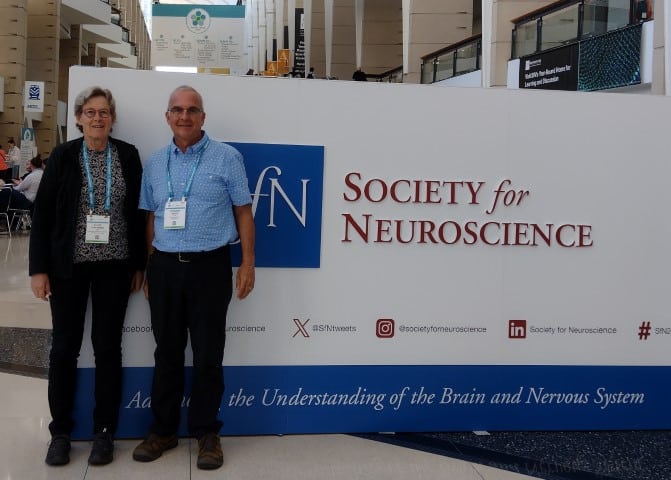
The annual meeting: SfN2024
About 25,000 people attended SfN2024 from October 5th until October 9th 2024 in Chicago. There was a buzzing community in Chicago that at the end of the meeting was replaced by a very active group of runners that were there for the Chicago marathon the weekend after SfN2024.
SfN meetings are the largest events for neuroscientists in the world. There are Poster Sessions, Nano-, Mini-symposia and Symposia among other events like Presidential Lectures, Clinical Roundtable meetings, Socials, Professional Development Workshops, Exhibitors, and much more. I attended many lectures, professional workshops, symposia poster sessions. Too many to report on. I only report here on the highlights for me.
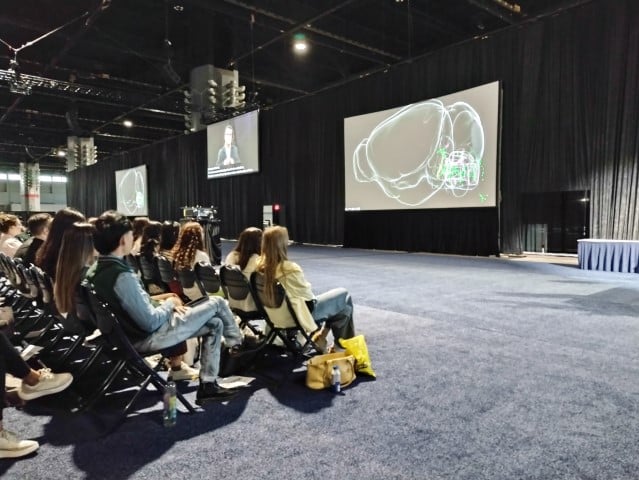
Professional development workshop on Team Based Learning
Team Based Learning (TBL) is a powerful form of active, small group learning that prof. White uses, with great success, in his classes at Duke University.
The process of TBL
TBL has a structure based on a 5-stage process of learning. Students are part of a team of 5-7 learners. This team is composed by the instructor and remains unchanged during the course. A TBL course typically has five to seven modules and each module is learned through the same TBL cycle.
Stage 1. Pre-Class preparation.
Prof. White uses a pdf with figures from the textbook and the lectures of the MOOC Medical Neuroscience as preparatory materials.
Stage 2. Individual Readiness Assurance Test (iRAT)
Students complete a 15-20 multiple choice question or image-based question test. Tests are learning materials like the General Study Tip 1. of the general study tips on the website learnmedicalneuroscience.nl. for the students of Medical Neuroscience.
Stage 3. Team Readiness Assurance Test (tRAT)
The questions are exactly the same as in the iRAT but the team has to agree on the best answer. This answer is scored on a scratch card. When the best answer is scratched, a star will appear signifying the target response option. When the star is not present after the first team answer, the team has to agree on the next answer choice and scratch that option. The team repeats the process until the star is uncovered. However, with each scratch that does not reveal the star, there is a reduction in the marks that could be earned for the question. This methods encourages team discussion and discourages guessing. The competitiveness (team members want the team to be correct at the first attempt) and fun of trying to get a scratch card with only stars uncovered attribute greatly to the energy and joy of learning through TBL.
Stage 4. Appeal
During the closing or the tRAT the prof. White circulates in the room and encourages teams to consider creating written appeal for questions they got incorrect first time around.
Stage 5. Mini lecture/ Question and answer session
After that prof. White has a question and answer session in the classroom. The whole class is invited to participate in discussing the most important concepts and applicate them to problems from medical neuroscience practice.
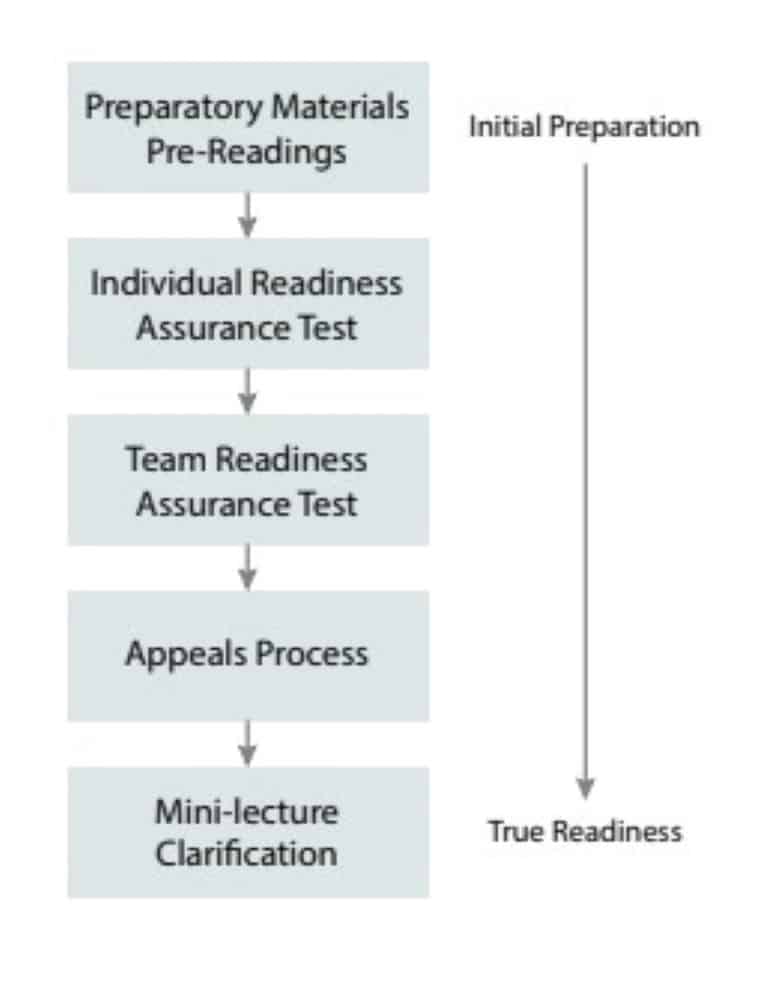
This 5-stage process makes for a fun and productive class session. However, the module continues when the students are challenged by a meaningful, team-based experience that follows.
Readiness assurance
In this readiness assurance process, there are team-based application activities. The teams work collaboratively and in real-time on application of their knowledge in class application activities. The teams are working on questions relating to significant problems. In prof. White’s courses, the applications may involve examination of human brain specimens, physiological experiments, or clinical case studies. When the applications use multiple-choice questions, teams report on their answers simultaneously in the class by holding up of a coloured card indicating a particular choice. This increases fun and competitiveness between teams and leads to energetic discussions between teams that defend their choices.
For good TBL learning in the application phase of the module, several things are important. These are often referred to as the “4 Ss” of an effective TBL application. Students learn to work on significant problems. They all work on the same problems, so that there can be robust discussion across teams when issues are debated and the application activities are debriefed. Multiple choice questions make a specific choice from limited options necessary. Decisions between teams are comparable. The teams report simultaneously, triggering enthusiastic discussions.
The work in the professional development workshop was done in the TBL process cycle. This made it clear to me how much energy this approach generates.
Student experiences with TBL
During the workshop, a university student presented his most important experiences with learning through TBL.
- Team responsibility. Team members began feeling responsible for each other’s learning experiences (like being in a sports team).
- Reduced timidness. You are invited to discuss in a positive energetic environment within a small team of peers.
- A less stressful way of learning. You use tests as learning material and really learn to apply your knowledge to relevant concepts and problem solving.
Symposium: The Brain’s Best Kept Secret Is Its Degenerate Structure
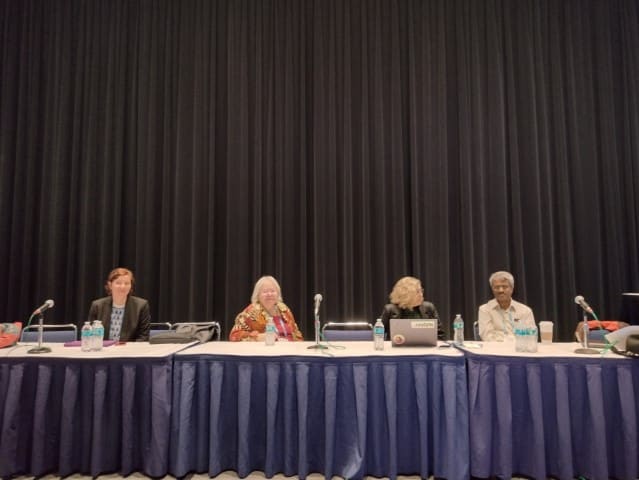
One of the event I attended was this symposium co-chaired by E. Marder and C. Bernard. The text following each lecture title is not the summary of the lecture but the elements that I think are noteworthy.
The goal of the symposium was to show that degeneracy is central to the architecture and operation of the brain. Degeneracy is the existence of multiple solutions to the same problem. This is a concept that applies from quantal physics to procaryotes to humans. In the brain, neurons can use different combinations of ion channels to produce the same firing pattern.
Sloppy control in bacterial growth homeostasis
The symposium went from basic biology to neural systems. The first lecture was on “Sloppy control in bacterial growth homeostasis” (N. Brenner), showing how populations of bacteria can exhibit a system of structured hierarchy of degeneracy that provides a distinct mechanism to support homeostasis. All measurable phenotypes – cell size, generation time, protein content and more – fluctuate, but homeostasis is maintained and distributions are stable.
A cascade of degeneracy in encoding neural systems
The second lecture was: “A cascade of degeneracy in encoding neural systems” (R. Narayanan). Encoding systems have to adapt continually to a changing environment and maintain stability in the process of adaptation. Degeneracy is helpful in achieving this. There is evidence for degeneracy from distinct neuronal subtypes in the hippocampal formation (a neuronal region central to learning and memory). Degeneracy can be found at a molecular level (presence of various ion channels for example), dissimilar molecular components to cause similar cellular physiology. Degeneracy is present on a neural network scale in hippocampal networks.
Neural degeneracy from a causal and computational perspective
The next lecture was on “Neural degeneracy from a causal and computational perspective”(L. Albantakis). In biology, structure is connected with function. Degeneracy allows different combinations of structural elements to perform the same function. The connection between biological structure and biological function is not one-to-one, but many-to-one. For individuals, neural degeneracy can occur between different anatomical brain structures that perform overlapping functions. Degeneracy also occurs between anatomically similar units like neurons because their connections with each other partially overlap.
Why degenerate solutions to circuit function are necessary for resilience in the natural world
The final lecture was: “Why degenerate solutions to circuit function are necessary for resilience in the natural world” by E. Marder. She made the theoretical framework on biological resiliency that was set by previous presenters very concrete with her data on the effect of fluctuation in temperature on the stomatogastric nervous system of crustaceans.
At high temperatures there is disrupted activity in the pyloric rhythms of crustaceans. It became clear that over the years, while all animals behave consistently and predictably at lower temperatures, there were yearly changes in the crash temperatures that were associated with changes in the ocean temperature. The network’s resilience to further environmental challenges is altered, although there is no indication of these changes under control conditions. Degeneracy allows the existence of hidden or “cryptic” changes in neurons and circuits.
At 110 C the temperature routinely used as control temperature in the laboratory all animals appear “normal”. Normal activity patterns are hiding cryptic changes.
To me it suggests that it can be difficult to avoid the consequences of degeneracy in science. It seems to be possible to compare populations of animals that seem to be the same but are hiding cryptic changes in their nervous system of which the scientists can be unaware.
I’m also very curious about degeneracy and epigenetics. Are the hidden changes in neurons set by epigenetic changes? What about latent synaptic connections and other forms of neural plasticity? How do they contribute to degeneracy and its adaptive value for nervous system structure and function?
An article can be found in the special edition of the Journal of Neuroscience with articles on Symposia at the meeting:
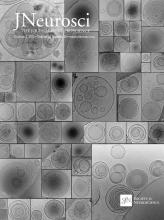
Symposium: Neuron-Glial Interactions: Implications for Plasticity, Behavior, and Cognition
SfN2024 featured a lot of attention for glia. The traditional view of glial cells has shifted. Astrocytes for example have been shown to modulate synaptogenesis and synaptic functions, influencing neuronal signalling and complex cognitive functions.
Description of the symposium
Glial cell interactions with neurons are essential to brain development and functions. Recent technological advances for selective manipulation of glia and neurons, and computational modelling approaches facilitate assessments of how neuron-glia interactions modulate in vivo cognitive behaviors. This symposium presented the latest developments in the measurements and manipulations of neuron-glial interactions, shedding light on their mechanisms and consequences on complex behaviors.
The focus of the symposium was on the role of astrocytes in neuron interaction and complex behavior. In their article in the special edition in The Journal of Neuroscience, they briefly reference other types of glial cells and recognize their importance.
Possibitity to keep learning even after the meeting
My meeting itinerary allowed me only to attend this symposium on glia. There is always so much to choose from and you can only be at one place at a certain time.
Neuroscience 2024 registrants have access to the Virtual Component platform. The platform will be available for one month. Access the virtual platform to view virtual posters and watch select scientific sessions livestreamed or on-demand. Symposia are not recorded, the information from other symposia can be found in the Journal of Neuroscience. There are two more articles on glia, I certainly want to study those.
Although the meeting has ended I can still access a wealth of neuroscience trough he virtual platform and the special edition in the Journal of Neuroscience.
I am already viewing lectures I have not seen at the meeting. I’m also re-watching lectures that I did attend, to really understand the scientific message. I can read the scientific articles of the other symposia in the special edition or the Journal of Neuroscience. A wonderful opportunity to keep learning from SfN2024. Medical Neuroscience is present at the virtual platform of SfN 2024 until 10 November,